The other day, while planning a trip around the three Hokuriku prefectures (Fukui, Ishikawa, and Toyama), I discovered something intriguing.
As I searched for must-visit spots in each prefecture, I stumbled upon a place called Ainokura Gassho-Zukuri Village.
It turns out this village is part of the UNESCO World Heritage Site known as “The Gassho-Zukuri Villages of Shirakawa-go and Gokayama.”
I already knew about Shirakawa-go, as it’s quite famous, but I had no idea there were other Gassho-Zukuri villages. And what’s more, you can not only visit but also stay overnight! I had to go!
The village is also popular among international tourists, making it tough to secure reservations. However, I managed to adjust my schedule and successfully booked a stay in a Gassho-Zukuri house.
I’ll share a detailed report with plenty of photos!
- Heading to Ainokura Gassho-Zukuri Village by Bus
- Strolling Through Ainokura Gassho-Zukuri Village: A Glimpse of Edo-Era Japan
- Unique Experience: Gather Around an Irori Hearth in a Gassho-Zukuri House
- Traditional Dinner Around the Hearth: A Feast and Cultural Exchange
- Morning in Ainokura: A Beautiful Sunrise Over the Village
- Ainokura Gassho-Zukuri Village: A World Heritage Site Worth Staying At
Heading to Ainokura Gassho-Zukuri Village by Bus
Compared to Shirakawa-go, which is highly developed for tourism and has good transportation access, Ainokura Gassho-Zukuri Village is much harder to reach.
You can only get there by car or by using the “World Heritage Bus,” which runs about once an hour.
In my case, I took the Kitokito Liner from Nagoya to Gokayama Gassho-no-Sato and then transferred to the World Heritage Bus to reach Ainokura.
Here is the World Heritage Bus. There were both sightseeing-style buses and buses that looked more like regular public transit.

On the way, I made a one-hour stop at the “Takanashi” bus stop. It had a quaint vibe reminiscent of something from “GeGeGe no Kitaro.”
Nearby, there are inns, souvenir shops, restaurants, hot spring facilities, and the designated historic Murakami House.
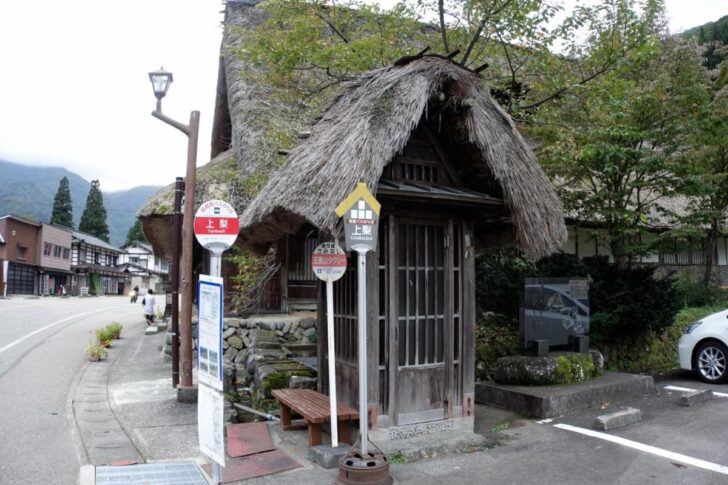
Afterward, I boarded the bus again and got off at the “Ainokura Entrance” stop.

From here, it’s a 5-minute walk to Ainokura Gassho-Zukuri Village. Just follow the signs.

To be honest, the “5 minutes” felt like a bit of an understatement. It’s a surprisingly long walk, but I pressed on.

I made it! The peaceful atmosphere is calming, yet I couldn’t help but feel excited.

For reference, here’s the location:
Strolling Through Ainokura Gassho-Zukuri Village: A Glimpse of Edo-Era Japan
Even the small teahouses here are built in the Gassho-Zukuri style.

The public restroom is embedded in a stone wall for some reason.

Next, I noticed a sign indicating a “panoramic photo spot.” I decided to check it out.

After climbing a small mountain path for about 5 minutes, I reached the spot.

Here it is! Though honestly, it wasn’t as clear of a view as I expected.

However, zooming in gave a good perspective of the Gassho-Zukuri houses nestled among the mountains.

After descending, I decided to take a walk through the village itself. Keep in mind that people still live here, so it’s important to be respectful and considerate while exploring.

Though I’m not from a rural area myself, there’s something nostalgic about this place—a sense of longing and familiarity.

Here’s a close-up of the thatched roof. I couldn’t help but wonder: doesn’t water seep through this material?

The contrast between these Edo- or Meiji-era homes and the modern cars parked in front of them is quite striking.
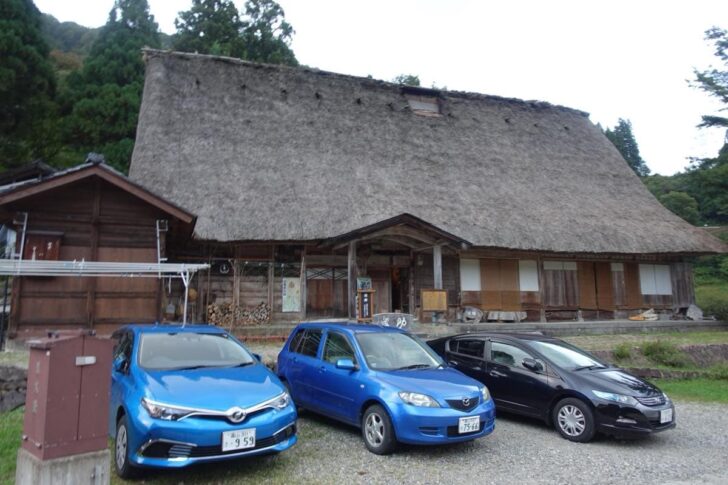
Before sunset, several large buses brought tourists to the village, so it was reasonably lively. However, after they left, only the residents and overnight guests remained.

Here’s a cozy-looking teahouse.

Some structures seemed to consist only of a roof. Perhaps they’re used as storage?
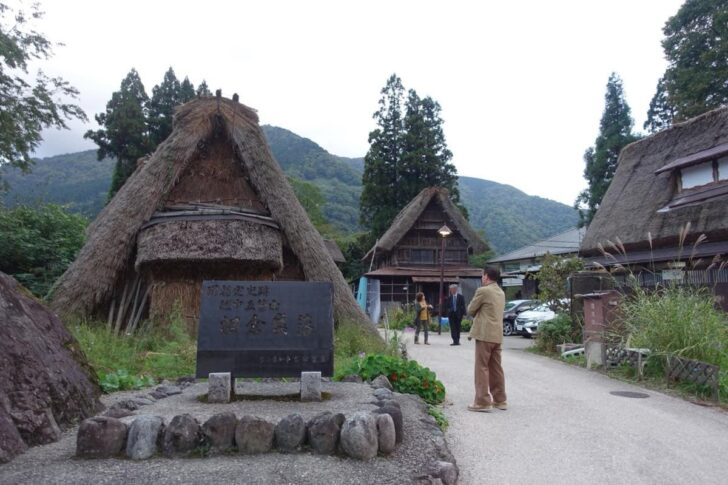
There was even a small shrine called Jinushi Shrine, where I stopped to offer a prayer.

Unique Experience: Gather Around an Irori Hearth in a Gassho-Zukuri House
The accommodation I stayed at was called “Goyomon.”
I never imagined I’d get the chance to stay in a Gassho-Zukuri house. I was thrilled.

Let’s go inside!
Once inside, I was greeted by the friendly innkeeper, who showed me to my room. That evening, the total number of guests was eight—myself and a group of seven others. The group stayed in a tatami room, while I was assigned a wooden floor room. The remnants of the irori hearth gave the room a nostalgic charm.

After dropping off my luggage, I was guided to the irori room. The atmosphere was wonderfully warm and cozy.

The innkeeper served me tea and traditional sweets.
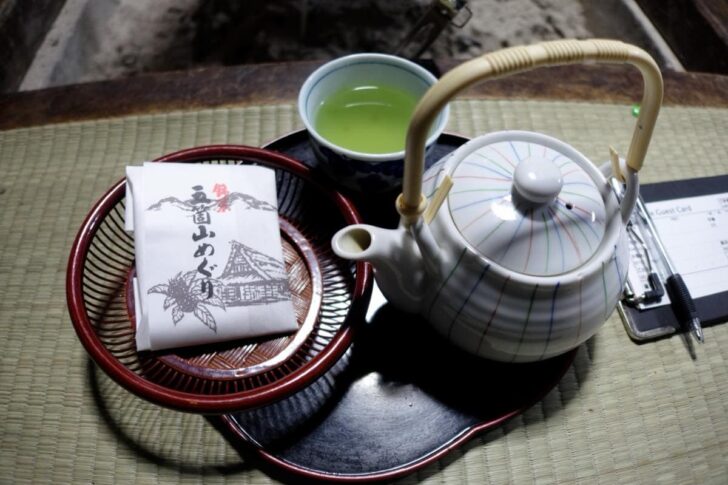
Meanwhile, an irori hearth fire was slowly cooking what I guessed would be our dinner: river fish skewers.

The tatami room for the group was also warm and inviting.

Inside the house, there were various items that hinted at its historical significance.

At first, I wondered if the bath might be an old-fashioned Goemon-style one. But to my surprise, it was a modern, beautifully maintained bathroom!

Traditional Dinner Around the Hearth: A Feast and Cultural Exchange
After bathing, it was time for dinner. All the guests gathered around the irori hearth for the meal.

The group of seven consisted of a Japanese family of four hosting an Australian family of three. I couldn’t help but think how fascinating this experience must have been for the Australians, as even for Japanese people, this kind of setting is quite rare.

During the meal, the innkeeper demonstrated the traditional Gokayama folk song, “Kokiriko-bushi.” She showed us how to play the “sasara,” a bamboo percussion instrument, by snapping the wrist. It looked easy but was surprisingly tricky!

Here’s a video for those unfamiliar with the Kokiriko-bushi.
Even the children had a go at playing the sasara.

By the end, the Australian family’s daughter had mastered it impressively. It was a beautiful moment of cultural exchange.

After dinner, I took a quiet stroll through the village. The only sounds were running water and chirping insects.

It was incredibly peaceful.

At one point, I saw someone performing the Kokiriko dance next to a fire hose station. While it’s great to celebrate traditions, perhaps consider the appropriate setting!

Morning in Ainokura: A Beautiful Sunrise Over the Village
The next morning, breakfast was as delicious and varied as dinner had been. The rice, in particular, was outstanding.

Since the group’s breakfast schedule was different from mine, I ate alone. While I’m used to solo travel, dining alone in this setting felt a bit lonely.
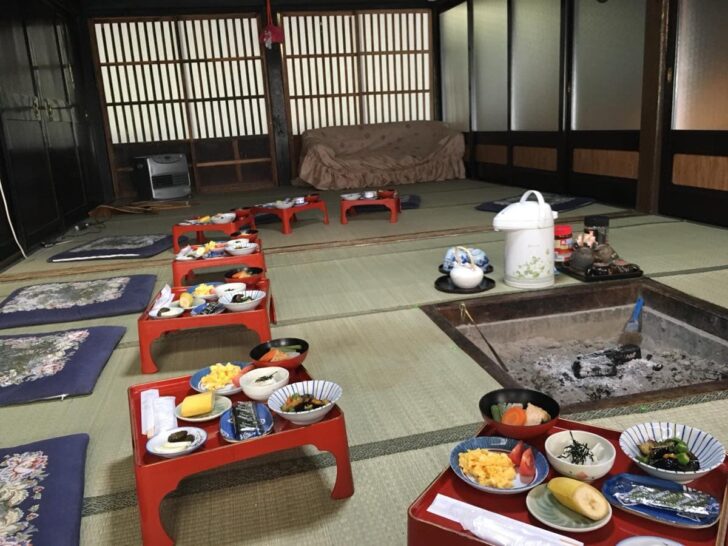
After breakfast, I took another walk. The Gassho-Zukuri houses bathed in the morning sunlight were breathtaking.
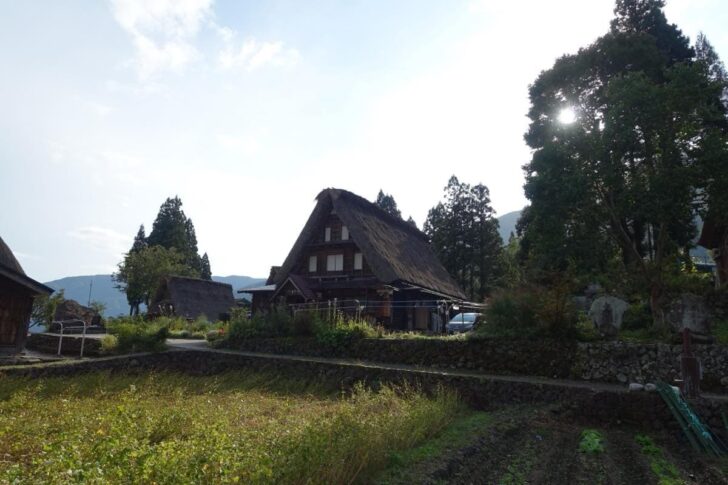
Behind the inn, I saw a house undergoing a roof renovation.

This particular house caught my attention—it had a certain charm, with sunlight streaming through the trees.

At this early hour, before the tourists arrived, the village was almost entirely empty.



I decided to revisit the panoramic photo spot I’d climbed to the previous day.
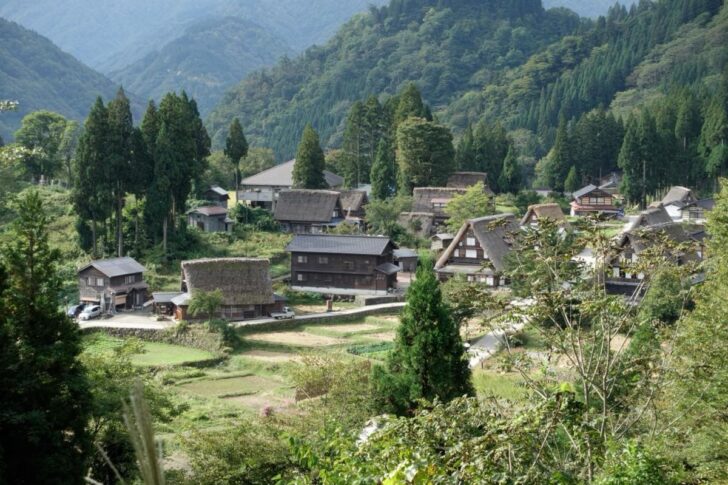
I took a closer look at the roofs this time. I wondered about those window-like openings—what purpose do they serve?
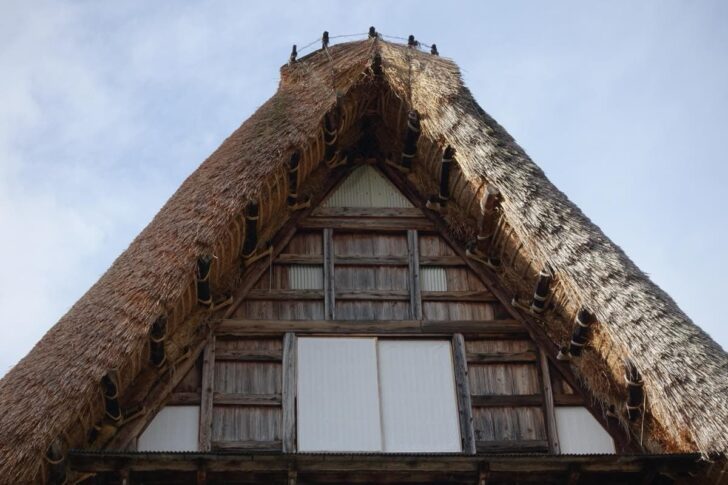
On the other side of the roof, there seemed to be similar openings.

On my way back from the walk, I noticed a surveillance camera. Of course, it was a product of a globally renowned Japanese brand—probably.

After paying my accommodation fee (a little over 9,000 yen, including beer), it was time to leave Ainokura Gassho-Zukuri Village. The serene and tranquil atmosphere of this place was truly cleansing for the soul.

By the time I left, just before 10 a.m., buses carrying tourists were starting to arrive. However, compared to Shirakawa-go, Ainokura still retains a quiet and peaceful charm.

I’ll be back someday. Thank you, Ainokura.

Ainokura Gassho-Zukuri Village: A World Heritage Site Worth Staying At
I imagine the village must look completely different in the snowy season, and I’d love to return to see it then.
Ainokura offers a unique and unforgettable experience, unlike anything else. I highly recommend visiting at least once in your lifetime.



Comments